Rémy Martin Bottle Catalogue (last updated: Apr 20, 2024)
(1200 bottles, 151 magnums and 31 figurines, but still not complete; over 500 miniatures on a separate page)
Introduction
Established as early as 1724, Rémy Martin has been able to climbe to the second position in terms of sales and it has held this postion for a long time now. Through several marriages Rémy Martin has family bonds with Renaud, Cointreau, Frapin and Hériard (-Dubreuil) and it is now part of Rémy-Cointreau with Dominique Hériard-Dubreuil as CEO.
As of 1870, the logo of Rémy Martin is the centaur, adopted by Paul Emile Rémy Martin.
Rémy Martin is famous for its Louis XIII, a very expensive cognac, which was introduced in 1874. With this bottle they were the first to market such an exclusive cognac. In the Black Pearl series they have found a worthy successor, though the Louis XIII is still being produced.
Contents:
1. Stars and VS
— 1a. Three star cognaçaise bottles
— 1b. Three star petite fine champagne bottles
— 1c. Three star fine champagne bottles
— 1d. Three star and VS bottles
— 1e. VS fine champagne bottles
— 1f. VS petite fine champagne bottles
— 1g. VS petite champagne clear glass bottles
2. VSOP (and VO, VSEP)
— 2a. VSOP (and VSEP), white label
— 2b. VSOP white label, qualité du centaure
— 2c. VSOP gold main label and oval gold neck label
— 2d. VSOP gold main label and oval black neck label
— 2e. VSOP gold main label and round black and gold shoulder label
— 2f. VSOP black and red main label
— 2g. VSOP Superieur
— 2h. VSOP Premier Cru
— 2i. VSOP Mature Cask Finish
3. Coeur de Cognac
4. Club
5. Accord 1738
6. Napoléon (also Centaure Napoleon and Centaure Royal)
7. XO
— 7a. XO Fine Champagne
— 7b. XO Fine Champagne Special
— 7c. XO Fine Champagne Excellence
— 7d. XO Fine Champagne new look
— 7e. XO Grande Champagne
8. Centaure (also Centaure XO, -Royal, – Extra, – Cristal, – Diamant)
9. Extra and Extra de Perfection
10. Age Inconnu, Vieille Réserve and Grande Réserve
11. Louis XIII and Black Pearl
— 11a. Louis XIII, empty old bottles
— 11b. Louis XIII, white tops
— 11c. Louis XIII, gold tops
— 11d. Louis XIII, Black Pearl
12. Vintages
13. Limited editions and specials
— 13a. Cuvée Secrèt, Superieure and Centaure Royal
— 13b. Coeur
— 13c. Limited VSOP editions
— 13d. Limited Club editions
— 13e. Limited XO editions
— 13f. Anniversary editions
— 13g. Limited Louis XIII editions
— 13h. Extra porcelain
— 13i. Cannes editions
— 13j. Voyage editions
— 13k. Vincent Leroy limited editions
— 13l. Coupes, Cellar editions and Cellar master editions
— 13m. Other editions
— 13n. Curiosities
14. Magnums and more
— 14a. Jeroboams and up
— 14b. Magnums
15. Figurines
16. Rémy Martin Extravaganza
1. Stars and VS
1a. three stars cognaçaise bottles:
1b. three stars petite fine champagne (around 1970-1980s):
1c. Three stars fine champagne (1980s):
1d. Three stars and VS, petite fine champagne:
1e. VS fine champagne:
1f. VS petite fine champagne:
1g. VS petite champagne, clear bottles:
VS Grand Cru (from early 1990s), old presentation:
VS Grand Cru (until 2007), new presentation:
VS Supérieur, after 2007:
Most of Rémy Martin’s three stars and VS bottles are petite champagne, even when they have ‘grand cru’ or ‘superieur’ written on them. Only few of them are fine champagne.
2. VSOP, VO, VSEP
VSOP started in 1927. VSEP wap probably intended for the US market, ca. 1948-1952. VSOP was aged much longer (40 years) than VO (20 years) in the 1930s.
2a1. VSOP cognaçaise
2a2. VSOP, before the Rémy Martin band appeared below on the label:
2a3. early bottles with the Remy Martin band below; VSEP and VSOP over 20 years old:
2a4. On the shoulder: Fine champagne cognac above VSOP and E. Rémy Martin & Co. below (until early 1960s):
2a5. On the shoulder: Fine champagne above VSOP (until early 1960s):
2a6. On the shoulder: E. Remy Martin above VSOP:
2b. white labels, with on the neck-label ‘Qualité du Centaure’ (early 1960s-1970):
2b1. With a so called ‘old centaur’ logo (ca. 1961-1962):
2b2. With the new centaur logo (ca. 1962-1970):
2b3. screw caps (1969-1970):
2c. VSOP gold label (main and neck (ca 1970-86/87)
Clear green bottles are until 1973. The dark frosted bottle was devised in 1972 but appear on the market in 1974.
2c1. VSOP gold label (main and neck): only text in left bottom corner:
2c2. golden labels: text in two corners:
2c3. golden labels: text in three corners, lower left and right and upper right:
Different text on lower edge of the label: Tes Rare Fine Champagne and Vieille Fine Champagne:
2c4. golden labels: text in three corners, upper left and right and lower left:
2c5. golden labels: text in all four corners:
In upper left: Produce of France or Produit en France in two lines:
Different text in upper left:
Different text below or different text on shoulder label:
2d. VSOP, gold main label and oval black and silver shoulder label (ca. 1986/87-1995):
68cl bottles:
70cl and 75cl bottles:
1 Liter bottles (up to 1.14L):
2e. VSOP gold main label and round black and gold shoulder label (ca. 1995 to first half 2000s):
Rémy Martin on the capsule in italics, no accent on Rémy on the main label:
Rémy Martin on the capsule in italics, with an accent on Rémy on the main label:
Rémy Martin on the capsule in capitals:
2f. black and red main label (started 2004-2005).
2f1. black oval shoulder label; capsule has a thin red line:
2f2. Capsules with a thick red line or without a red line:
2f3. Round gold coloured emblem on the shoulder; on the capsule a red rectangle (from mid-2010s):
2f4. Different capsules, with a red band:
2g. VSOP Superieur and VSOP premier cru (vanaf ca 1985):
2h. VSOP premier cru (ca. 2006-2012)
2i. VSOP Mature cask finish (2012-2021, only for European market):
3. Coeur de cognac (vanaf 2007)
Coeur de Cognac is placed a little bit higher than the VSOP; it is a fine champagne.
4. Club (first made by André Giraud in 1985)
All Clubs are fine champagne cognacs.
On the label: ‘CLUB de Remy Martin’:
‘Remy Martin’ on top of the label, below that ‘CLUB de Remy Martin’:
Remy Martin fine champagne cognac at the top, below that ‘CLUB’ is mentioned twice:
Black bottles for the Asian market:
5. Accord 1738 (started 1997, first series 1997-2006; second series 2006-2018; third series from 2018)
6. Napoleon
6a. Around 1970s:
6b. Napoleon, grande fine champagne, rectangular label (from early 1970s on:)
6c. Centaure Napoleon, fine champagne, brown-yellow label with dark letters (from around 1980 on):
6d. Napoleon, fine champagne, greyish-brown label with letters in gold colour (ca. 1980s):
6e. Napoléon, Grande Fine Champagne:
6f. Napoleon Extra Old, fine champagne, dark label with red and gold emblem (from around 1990 on):
6g. Napoleon Extra Old, fine champagne, dark label with gold coloured cap and emblem (probably for Asian market):
7. XO
7a. XO Fine Champagne (produced from 1981):
7b. XO Fine Champagne Special (came out in mid-80s):
7b1. Laurels around the emblem inside the label, big emblem, green glass:
7b2. Laurels around the label, smaller emblem, clear glass (late 1980s – early 1990s):
7b3. Laurels around the emblem inside the label, small emblem (roughly 1990s-2000s)
7b3-1. no accent on Rémy Martin and the centaur on the main label is coarse:
7b3-2. accent on Rémy Martin and the centaur on the main label is more refined:
7c. XO Fine Champagne Excellence, fine champagne started in 2003:
Excellence is large print:
Excellence is small print (from around 2006:)
7d. XO Fine Champagne new look (2016):
2022:
7e. XO Grande Champagne:
8. Centaure (and Centaure XO, – Royal, – Extra, -Cristal, – Diamant)
8a. Centaure (from 2011, Chinese market)
8b. Centaure XO (1980s, replaced by XO Special)
8c. Centaure Royal, fine champagne and XVSOP (around 1980s):
8d. Centaure Extra (from 1975 till 1996):
8e. Centaure Cristal, 1981 till 1991:
without Remy Martin engraved on the front:
with Remy Martin engraved on the front:
8f. Centaure Diamant (from 2010 on):
Al these Centaures are Fine champagne.
Other Centaure’s can be seen under Napoléon and under ‘Centaure, Accord Royal 1738 and Extra’: Napoléon Centaure, Centaure XVSOP and Centaure Extra Old.
9. Extra and Extra de Perfection
9a. Extra Très Vieille
9b. Old extra bottles
9bc Old extra carafes (until 1998)
9d. Modern Extra carafes (2004-2010):
with a small centaur:
with a large centaur:
9e. Extra de Perfection (1989-1998)
10. Age Inconnu, Vieille reserve and Grande Réserve
10a. Age Inconnu (ca. 1960-1974):
10b. Vieille Réserve:
10c. Grande Réserve:
11. Louis XIII and Black Pearl
Louis XIII:
Good information about Louis XIII bottles can be found on the Louis XIII Evolution website. They have also a lot of information on the stoppers, emblems, engravings on the bottom, importers and on the packaging.
The first Louis XIII was made in 1874 by Paul-Émile Rémy Martin, although the name Louis XIII was not in use before 1937/1938. They were simply called Age Inconnu (age unknown). The oldest bottles may have varying orientation of the fleurs de lys and varying number of spikes (or fins as they are also called). The first bottles were hand made glass bottles. Around 1900 they began selling the Louis XIII in Baccarat bottles. Prior to 1937 all bottles were (according to Rémy Martin) labeled with reactangular labels with the name Age Inconnu on it. But no filled Louis XIII bottles from before 1938 seem to exist anymore, only empty ones.
In 1979, the bottles with a paper label, a white top and a seal disappeared to make way for the bottles with a gold top without a paper label. They now have transparant plastic labels with gold lettering. The upside down decanter-style stopper used until then has now been replaced by the solid-core fleur de lys stopper.
11A. Louis XIII, very old bottles, empty (Europe):
11B. Louis XIII, White tops
SOME GUIDELINES TO DATE THE BOTTLES AND DETERMINE WHICH MARKET THEY WERE DESTINED FOR.
EUROPEAN BOTTLES:
European bottles have Age Unknown Très Vieille (AU) or Age Inconnu Very Old (AI) on a square label until 1962/63. They came in a rattan basket until 1961 and had the 1938 royal banquet card and later on the 1938/1957 royal banquet card.
1962-1963 Was a transitional period were they changed the label and packaging. In this period they could have a square label with AI or AU, or a bean-shaped label with Louis XIII Très Vieille or Very Old. The logo on top changed from an old-type centaur to a new one. Both can be seen. They came in white boxes with the 1938/1957 royal banquet card.
After 1962-1963 they were all bean-shaped with Louis XIII Très Vieille or Very Old until 1968. White boxes were used and the 1938/1957 royal banquet card. From 1957 the Daydé drawing was enclosed.
From 1969 until the end red octagonal boxes were used and the battle of Jarnac card had replaced the 1938/1957 royal banquet card.
US BOTTLES:
USA bottles always have LOUIS XIII rarest reserve on bean-shaped labels. The reverse is also true: bean-shaped labels with LOUIS XIII rarest reserve on them are for the US market.
Before WW II:
Plain cardboard boxes. The importer was Reinfeld. Browne Vintners can also be seen. Reinfeld and some others were owner of this company. No ‘baccarat’ was etched on the bottom; between 1938-1940 a paper baccarat logo was possible.
From 1938-1940 red boxes were used and the 1938 royal banquet card was attached.
After WW II:
The importer became Renfield (one of the former owners of Browne Vintners).
From 1946-1958 green boxes were used. The 1938 royal banquet card and later on the 1938/1957 royal banquet card was attached. After 1957 the Daydé drawing was enclosed. The baccarat logo was not used until 1951.
From 1959 till 1961 red boxes were used. The 1938/1957 royal banquet card was attached and the Daydé drawing enclosed. The bottles had a baccarat logo etched on the bottoms.
From 1962-1964 white boxes were used. Also the 1938/1957 royal banquet card and the Daydé drwaing.
From 1964-1968 the oval split box was used. Again with the 1938/1957 royal banquet card and the Daydé drawing.
From 1969-1978/79 the octagonal box was used and the battle of Jarnac card replaced the 1938/1957 royal banquet card (same packaging as for Europe).
ASIAN BOTTLES:
They were the same as European bottles, but from 1969 to 1978 they also produced bottles in the St. Louis factory (St. Louis crystal instead of Baccarat crystal) for the Asian market.
In 1979 they already switched to the gold top bottles, but they still had some supply of white top bottles in. They used the plastic cases in 1981 to sell this stock, mainly in Asia. Mostly baccarat bottles, but also some St. Louis bottles.
All major differences between the white tops are in this TABLE (click here).
THE ORDER IN WHICH THE WHITE TOP BOTTLES ARE PRESENTED BELOW IS: EUROPE FIRST, THEN THE US AND FINALLY ASIAN IN PLASTIC BOXES.
11B1. Rectangular labels ‘Très Vieille Age Inconnu’ or ‘Very Old Age unknown’, Europe pre-WW2, no baccarat logo (1938-1941)
boxes unknown, probably plain card board:
11B2. Rectangular labels ‘Très Vieille Age Inconnu’ or ‘Very Old Age Unknown’, with Baccarat stated on the bottom (no logo), Europe 1946-1950
in rattan baskets:
11B3. Rectangular labels ‘Très Vieille Age Inconnu’ or ‘Very Old Age Unknown’, with a Baccarat logo, Europe 1951-1961 (1962?)
in rattan baskets:
Other:
11B4. Rectangular labels ‘Très Vieille Age Inconnu’ or ‘Very Old Age Unknown’, with a Baccarat logo, 1962, Europe and Asia
in white boxes:
11B5. Bean shaped labels ‘Age Unknown’ or ‘Very Old Age Unknown’, UK:
(It seems some UK bottles already had bean shaped labels before 1961, packaging: rattan baskets)
11B6. Bean shaped labels ‘LOUIS XIII Très Vieille’ and ‘Louis XIII Very Old’, Europe and other countries (not USA) 1957-1969
in white boxes:
11B7. Bean shaped labels ‘Louis XIII Très Vieille and Louis XIII Very Old’, Europe and other countries (for USA, same boxes, see 11b10.), 1969-1979;
in red octagonal boxes and with a card of the battle of Jarnac:
11B8. Bean shaped label ‘Louis XIII Brand – Rarest Reserve’, South- and Central-America, USA from 1933 till 1964
the first years probably also in plain cardboard boxes, but mainly in red or green boxes:
11B9. Bean shaped label ‘Louis XIII Brand – Rarest Reserve’, USA 1964-1968;
in oval split boxes:
11B10. Bean shaped label ‘Louis XIII Brand – Rarest Reserve’, USA 1969-1978;
in red octagonal boxes:
11B11. Bean shaped labels ‘Louis XIII Très Vieille and Louis XIII Very Old’, Asian ca. 1980;
with a card of the battle of Jarnac, in plastic-glass casings:
11C. Louis XIII Gold tops
All major differences between the gold tops are in this TABLE (click here).
11C1. Louis XIII Gold tops 1979 – ca. 1987: name Louis XIII embossed on the capsule; they had red boxes with truncated pyramid lids:
11C2. Gold tops ca. 1987 – 2002: name Louis XIII etched in the capsule; red boxes with truncated pyramid lids:
a. booklet in a 45 degree angle in the box and no name on top of the box
b. booklet upright in box and a name on top of the box
11C3. Gold tops, from 2003-2011 clam-shell boxes with curved lids:
11C4. Gold tops from 2011-2019, vertical cases with sliding doors:
11C5. Gold tops from 2019, rectangular boxes with mirror inside and NFC technology:
11C6. Gold tops from 2023, rectangular cellulosic boxes:
(More on Louis XIII bottles on the Extravaganza site, see bottom of this page).
11d. Black Pearl:
These all are Grande champagne cognacs.
12. Vintages
13. Limited editions and specials
13a. Cuvée Secrèt and Superieure
13b. Coeur
13c. Limited VSOP editions
13d. Limited Club editions
13e. Limited XO editions
13f. 250 year anniversary editions
13f-2. other anniversaries:
13g. Limited Louis XIII editions
13h. Extra (porcelain)
13i. Cannes editions (2010-2019)
All are fine champagnes.
13j. Voyage editions (2001)
Voyage, Sea Line, Trek, Altitude and Compass. All are 350ml fine champagnes.
13k. Vincent Leroy limited editions (2016-2017)
13l. Coupes, Cellar editions and cellar master editions
13m. Other editions
13n. Curiosities
14. Magnums and more
14a. Jeroboams and up:
14b. Magnums:
1. VS (1.4-2L):
2. VSOP (1.4-2.2L):
3. Club (1.5L)
4. Napoleon (1.5L)
5. XO (1.4-1.75L):
6. Louis XIII and Black Pearl (1.4-1.75L):
Louis XIII limited editions:
7. Age Inconnu and Vieille Réserve
8. Limited editions:
15. Figurines (in 7 colours, first release in 1981)
16. Rémy Martin Extravaganza
The very expensive and extravagant bottles of Rémy Martin have their own page, with room for a more extensive description of the bottles: Louis XIII, Black Pearl and the Rare Casks.
Click on this link to see Rémy Martin Extravaganza.






























































































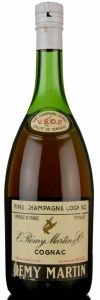

































































































































































































































































































































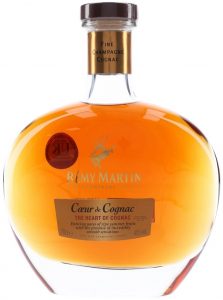















































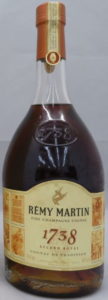










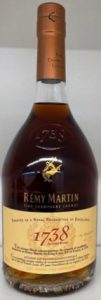

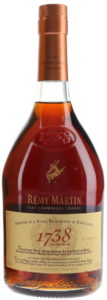









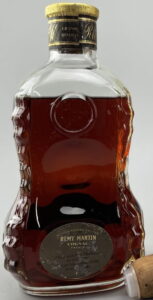







































































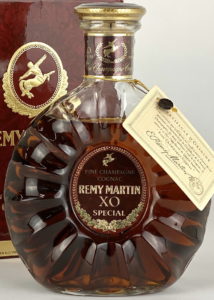
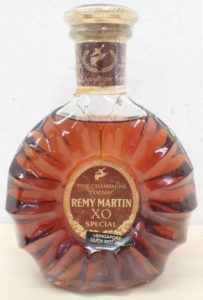
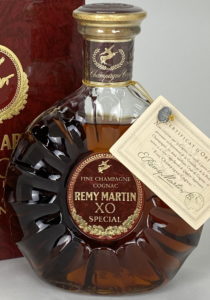
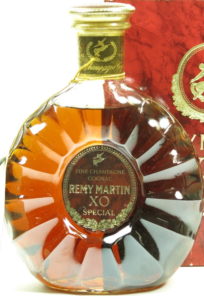





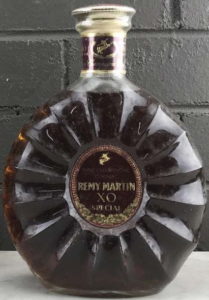






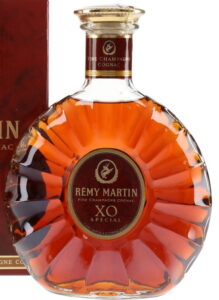







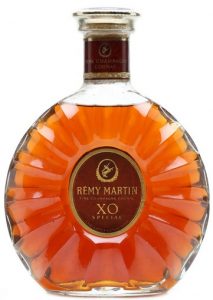









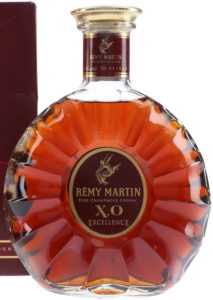





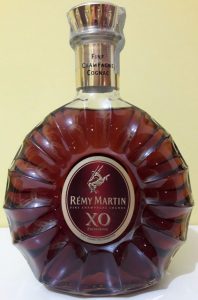
















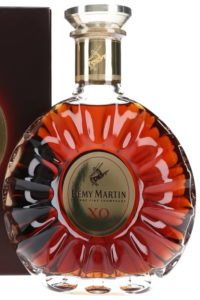








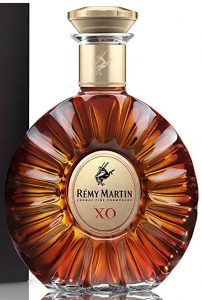


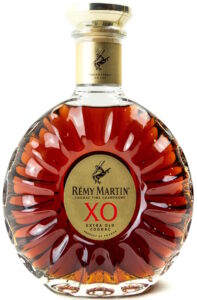








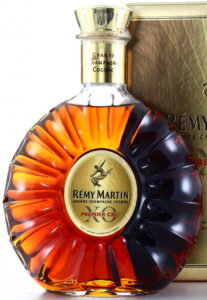




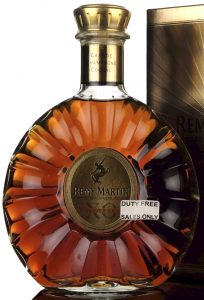


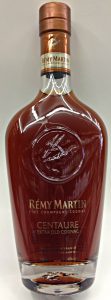







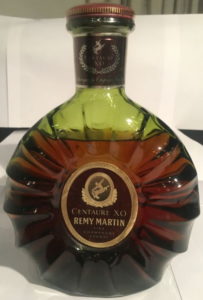


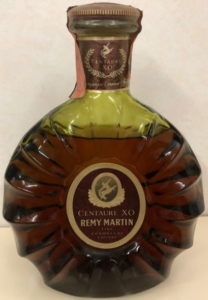














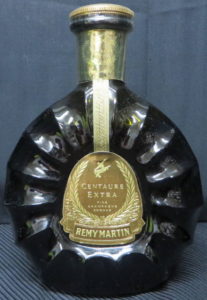












































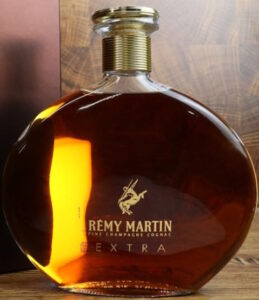












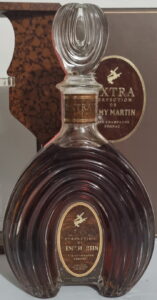































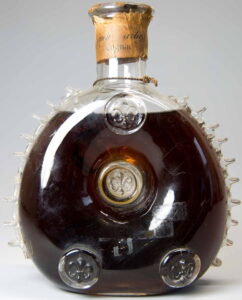







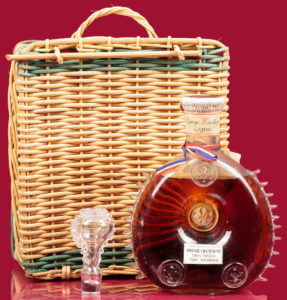





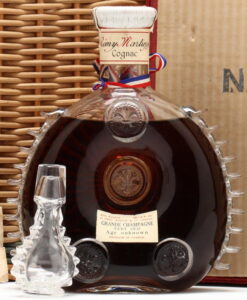
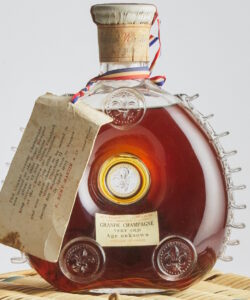
















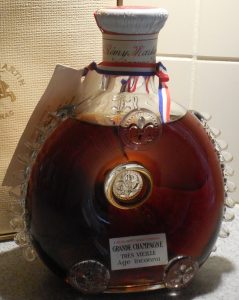












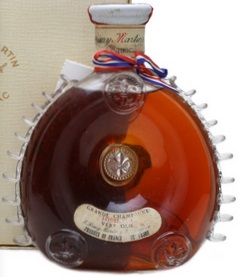


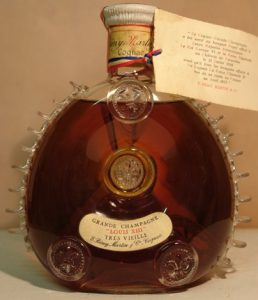










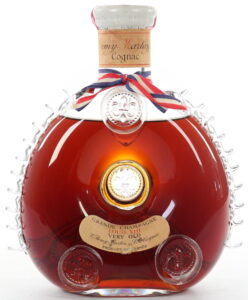


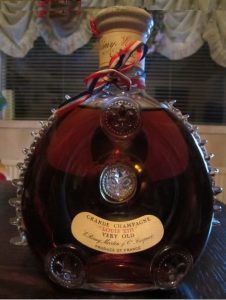


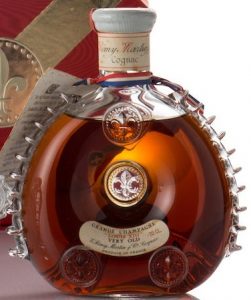


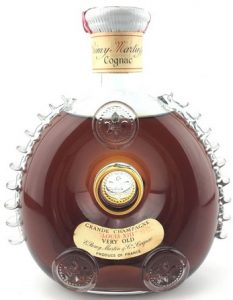

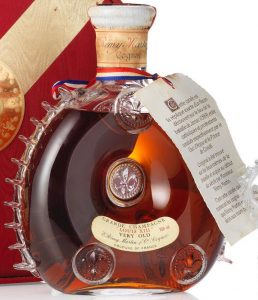






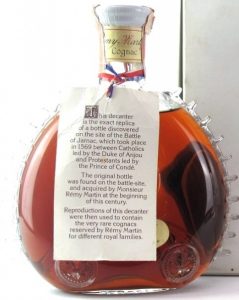


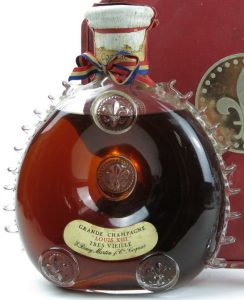




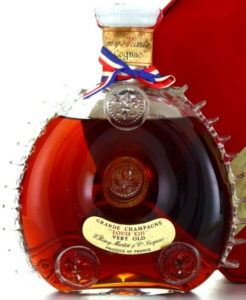






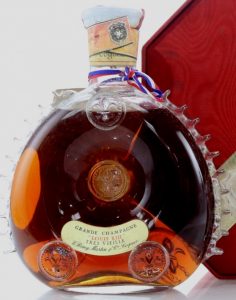




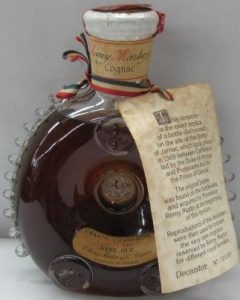



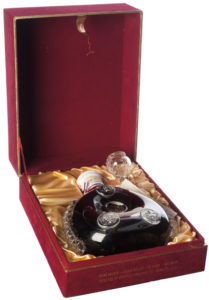












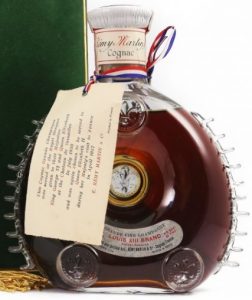













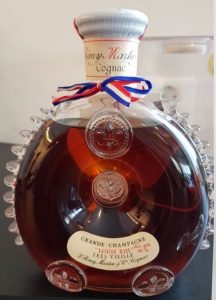









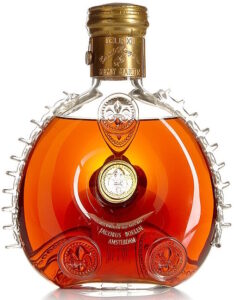










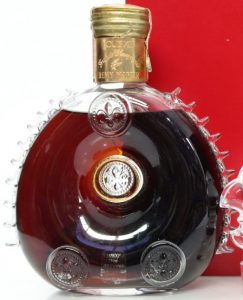









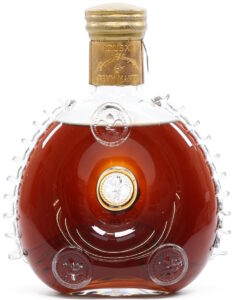








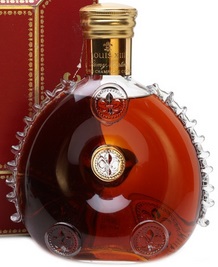


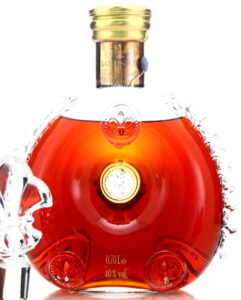





































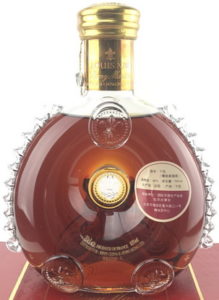

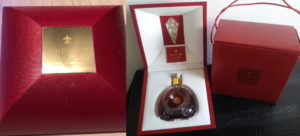








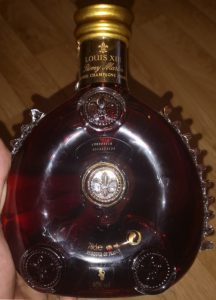

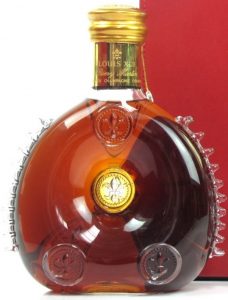

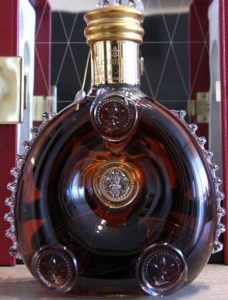
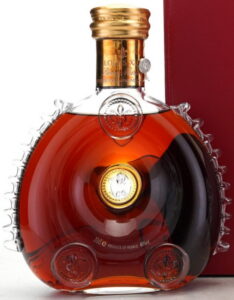













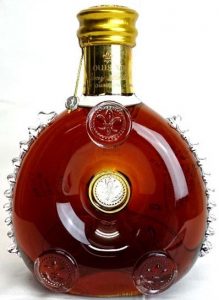








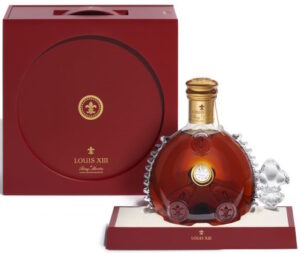














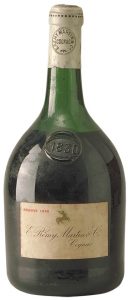









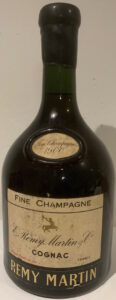
















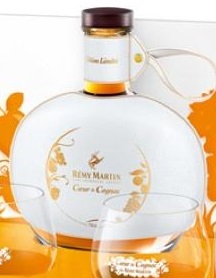












































































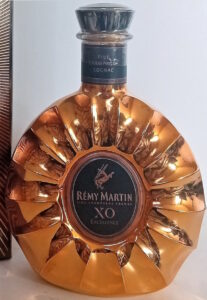




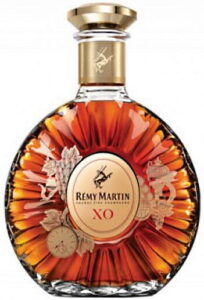

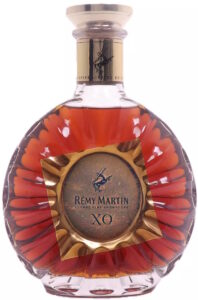



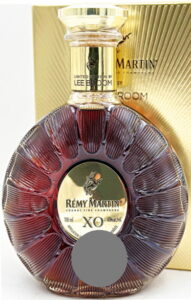





























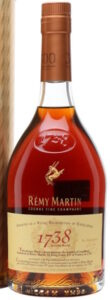
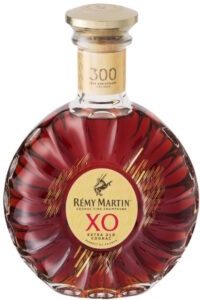














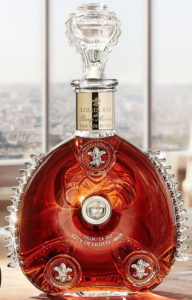




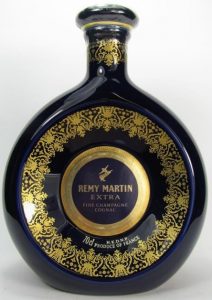
















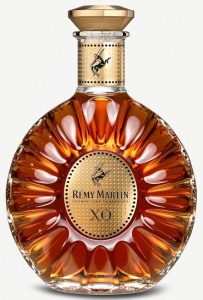

























































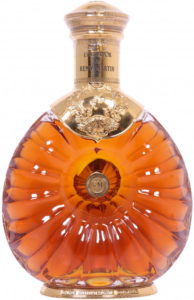



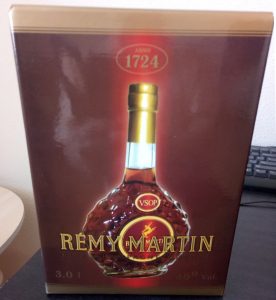


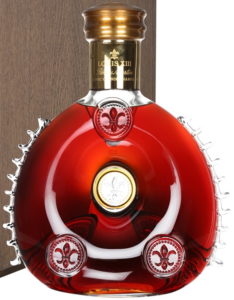





















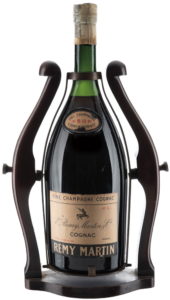






















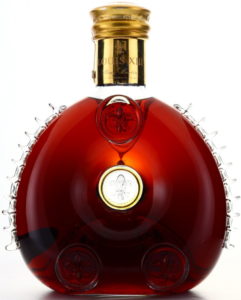


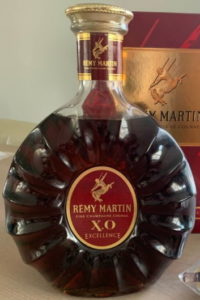










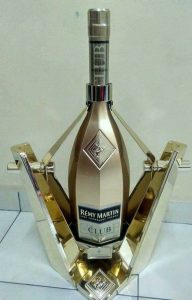




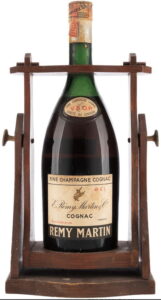

















































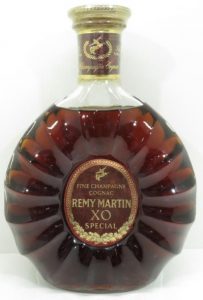





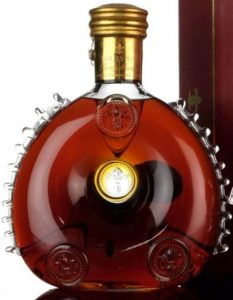





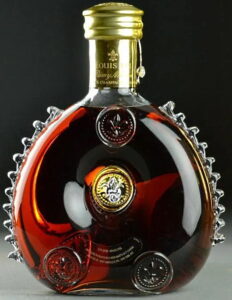
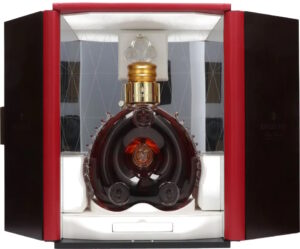





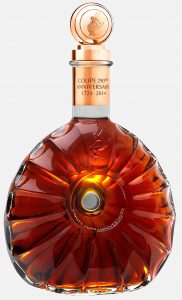













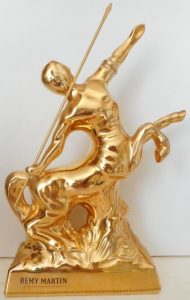
























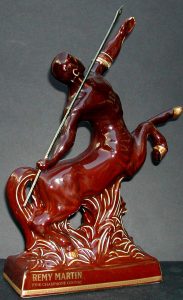
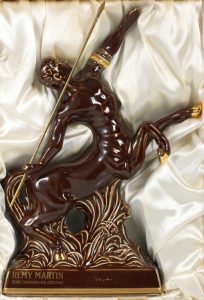

Hi I’m trying to find some information on this bottle if you could please help ? Thank you in advance
There is not much to tell. This bottle is from around 1995-2000. I can’t make out the contents, but it should be on the bottle ore the box.
Question. Does an empty jeroboam bottle with a wooden tipping holder hold any value?
Its a nice bottle to look at, but age is unsure.. The name Remy Martin stand at bottom of label, does this indicate an early age?
I have more pictures if needed
There are always some people interested in such a bottle. But how much it would be worth I don’t know. I think a few tens, maybe around €50-60. Sometimes higher prices are asked, but it is doubtful that will be paid for it.
Thank you.
Much appreciated.
Now the fun part, finding those people that want to buy it. Lol
Hello there mate,
Can you tell me how much is this worth?
I presume it is 35cl? These aren’t worth much. My estimate would be €20-40.
Hello
I am trying to date this bottle, and find out it’s approximate worth. Thank you for you help!
1970s or 1980s. Sometimes, additional markings on the backside can differentiate between these two decades.
It has no worth, because it is opened. A full bottle would be worth around 40 euro’s.
Hi I wonder if you can help
I have a bottle of Remy Martin Age Inconnu with a paper seal – numbered B 67760 – I think its from the 1970’s – any idea of the approximate value? Pictures attached
Many thanks
Giovanni
End 1960s or first half 1970s. I estimate this bottle between €400 and 600. But prices have a wide range. I have seen them go for €200 and also for over €700.
Thank You very much
hey, could You help me finding this one? What year and type is it?
This is to little information to go by. Sorry.
What more do you need?
Is there maybe a label or a brand name or something?
Only this Remy Martin logo on the front of bottle.
I can’t even recognize the logo, because the photo is to small.
But I doubt whether this is an original Remy Martin decanter. It looks more like a decanter you can buy in a crockery shop.
I have not seen this before. Also I don’t think Remy Martin would use a plastic screw fitting.
Kind regards,
Ton
I have an unopened bottle of E. Remy Martin & Co. VSOP Fine Champagne Cognac. White label, 70% Proof-upper right, France- lower right, Mainson Fonee en 1724, lower left. I am trying to find out if it was purchased in France or US and about when it was bottled.
Mariellen Ross
Without a photo it is rather difficult. But 70% proof is a clear indication it was for the UK market.
What is the text on the shoulder label and what units were used to give the contents?
Achterzijde
Beste
Ik ben sinds kort in het bezit van een fles Remy Martin Expo 58, allicht uitgebracht naar aanleiding van de wereldtentoonstelling in België in het jaar 1958.
Is dit een zeldzaam exemplaar ? Ik heb geen certificaat of dergelijke. Waarde ?
Bedankt voor uw feedback
Hallo Eric,
Inderdaad zeer zeldzaam. Dit is de eerste die ik heb gezien. Toch voegt dit naar mijn mening nauwelijks iets toe aan de waarde. Bij een veiling zou ik €100-120 verwachten.
Ton
Hi,
I don’t know if you can help. I’m trying to find out if a boxed gift set of Remy Martin with 2 plain brandy glasses is of any value. I believe my father may have bought it in the 1980’s or early 1990’s. I would appreciate any advice you could give.
I am attaching some photos. The brandy is unopened & bears a code L19559 on reverse near barcode
Hi,
These bottles are not worth that much. The fact that it is a gift box with two glasses does not contribute to a higher price. I would estimate a price between €40 and €60.
1980-90s is correct.
Kind regards,
Ton